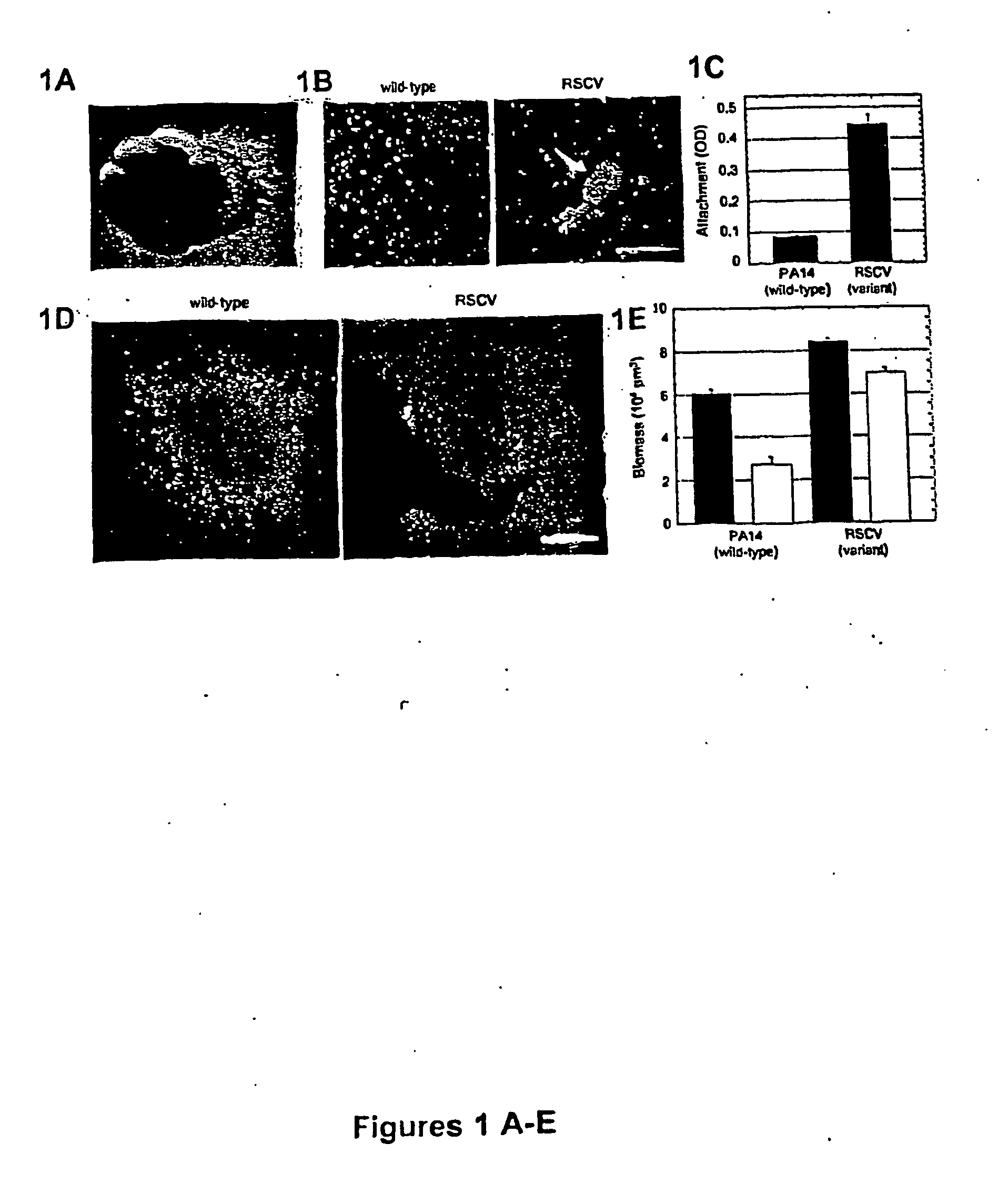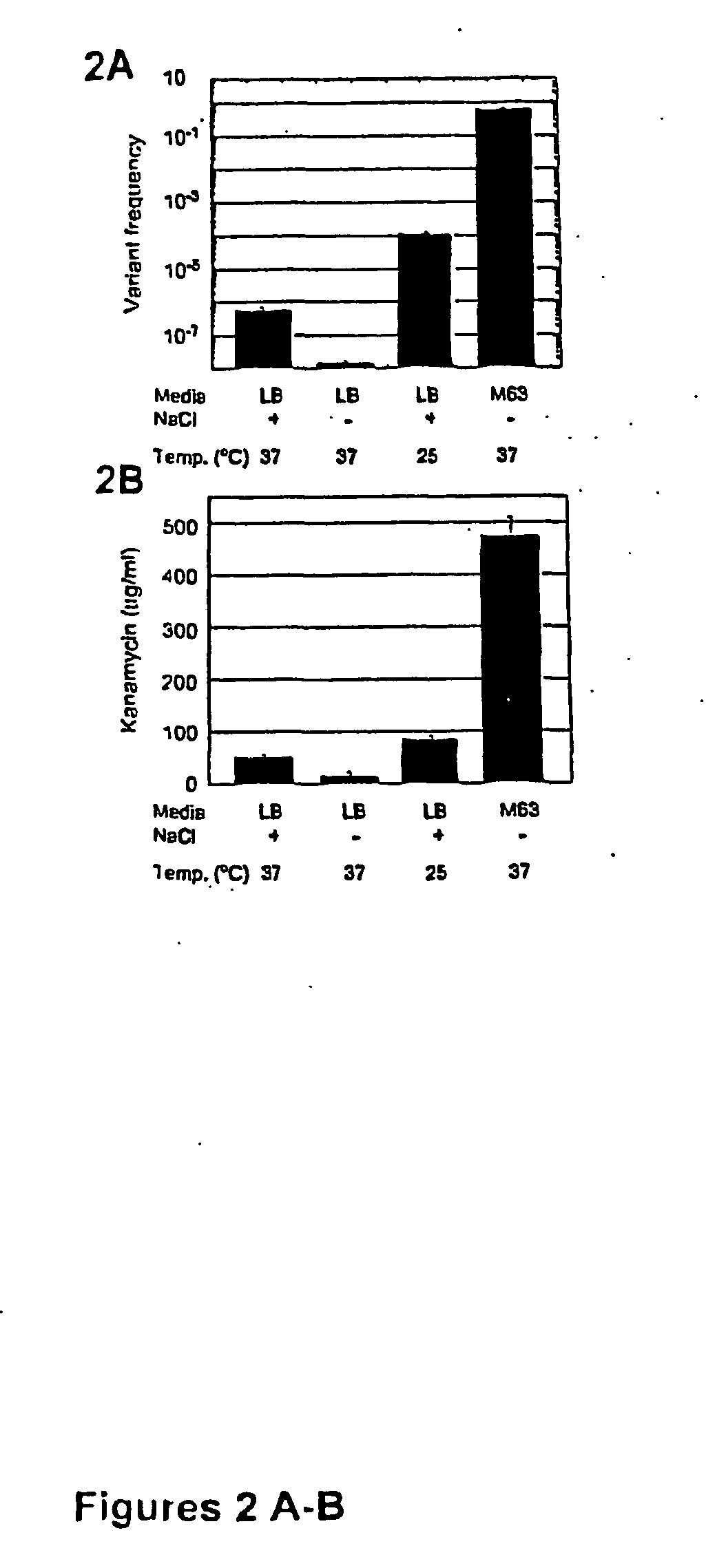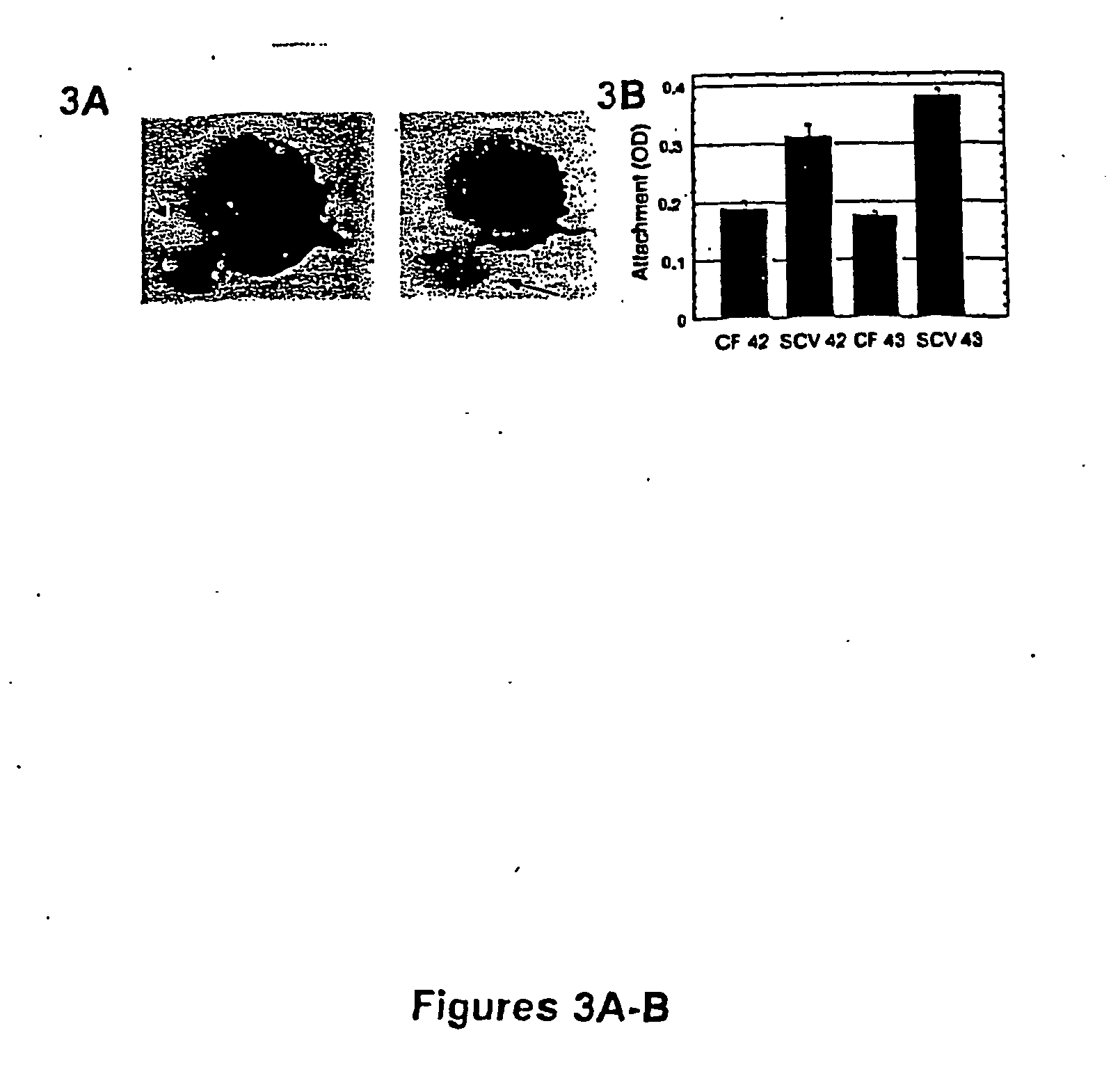Regulators of biofilm formation and uses thereof
a biofilm and gene technology, applied in the direction of peptides, peptide/protein ingredients, peptide sources, etc., can solve the problems of affecting affecting the survival rate of cf populations, so as to improve the survival rate and the susceptibility of microbial cells, the effect of regulating the phenotypic switching
- Summary
- Abstract
- Description
- Claims
- Application Information
AI Technical Summary
Benefits of technology
Problems solved by technology
Method used
Image
Examples
Embodiment Construction
Overview
[0129]Pseudomonas aeruginosa is the most important pathogen in the lungs of cystic fibrosis (CF) patients. Colonization of the CF lung by P. aeruginosa persists despite the use of long-term antibiotic therapy, since antibiotic treatment rarely results in eradication of the infection. Reports have suggested a direct link between resistance to antimicrobial compounds and the ability of P. aeruginosa to form biofilm in CF lungs. Other hypotheses explain P. aeruginosa antibiotic resistance by postulating that factors within the CF respiratory tract select for phenotypic variants suited to survive antimicrobial treatment. As is discussed below, we have determined that a clinical isolate of P. aeruginosa, strain PA14, was capable of growing under inhibitory concentrations of the antibiotic kanamycin (up to 40 times the susceptibility level of the strain) when bacteria had undergone phenotypic variation. The antibiotic resistant variant colonies obtained from kanamycin plates wer...
PUM
| Property | Measurement | Unit |
|---|---|---|
| concentration | aaaaa | aaaaa |
| time | aaaaa | aaaaa |
| time | aaaaa | aaaaa |
Abstract
Description
Claims
Application Information
 Login to View More
Login to View More - R&D
- Intellectual Property
- Life Sciences
- Materials
- Tech Scout
- Unparalleled Data Quality
- Higher Quality Content
- 60% Fewer Hallucinations
Browse by: Latest US Patents, China's latest patents, Technical Efficacy Thesaurus, Application Domain, Technology Topic, Popular Technical Reports.
© 2025 PatSnap. All rights reserved.Legal|Privacy policy|Modern Slavery Act Transparency Statement|Sitemap|About US| Contact US: help@patsnap.com



